Directed by Otto Preminger, written by Wendell Mayes (screenplay), John D. Voelker (novel, as Robert Traver)
The People vs. Anatomy of a Murder
The People intend to argue in this review an unlikely inclusion into the film noir landscape. Anatomy of a Murder is a courtroom drama. It’s a procedural. It’s serious. It’s also funny. Anatomy of a Murder can even be said to take itself lightly, to take itself lightly, from time to time. Nevertheless, the people will prove the inclusion of said film as incontrovertible film noir by establishing the following, inarguable facts:
- Murder is generally not funny. It’s not to be taken lightly. And it’s the central device to this story.
- The wife of the accused is unquestionably a femme fatale.
- The ambiguity, the necessary ambiguity, mind you, means we may be witnessing an attempted, brazen heist of the American legal system. Indeed, this very haziness, this lack of clarity, combined with the eventual outcome, may be the most important piece of information in determining noir.
Furthermore, the People would like to introduce the following 3 still photographs into evidence. Note the detachment. Note the forbidden flirtation. Note the use of shadow:
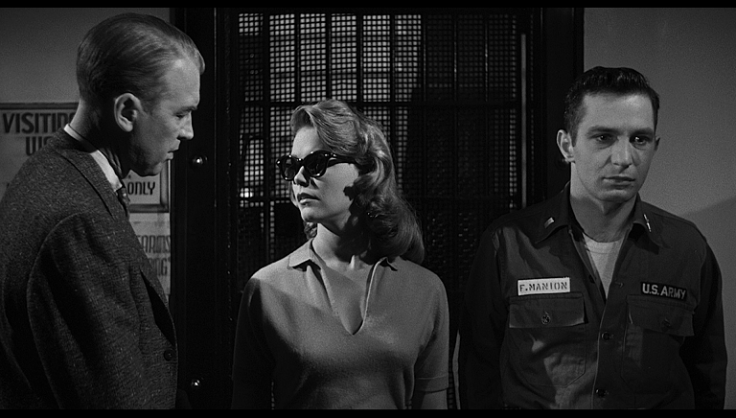
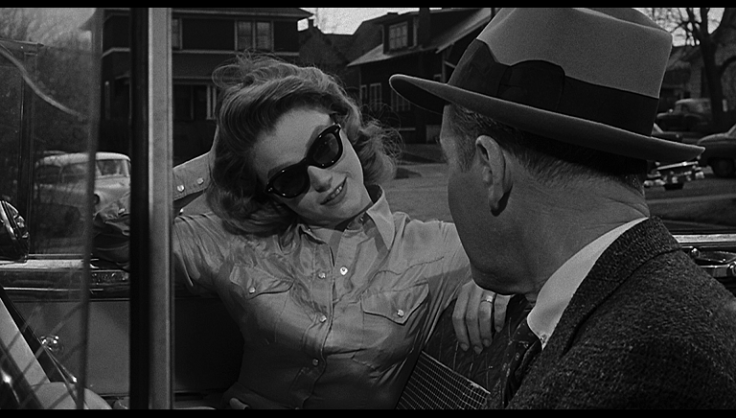
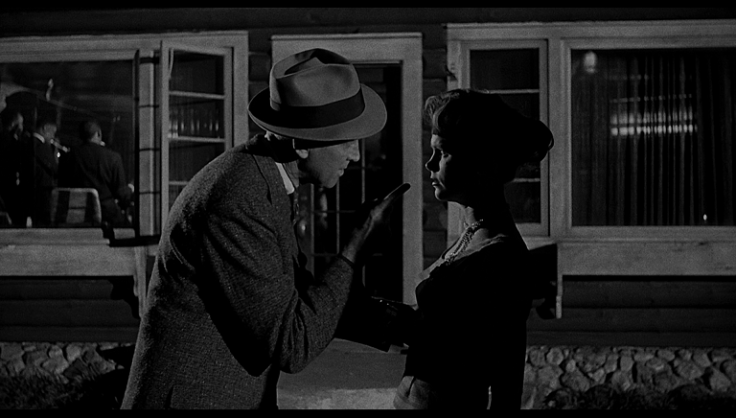
Now the defense attorneys for film noir will attempt to confuse you with arguments against the upstanding central character played by Stewart, with arguments of torrid affairs and of murder not even appearing onscreen. They’ll whittle you away with doubt and bamboozle you with the fear of the truth. They’ll lie to you. But the truth is, Anatomy of a Murder is guilty of being film noir.
Brilliant, broke defense attorney Paul Biegler (Jimmy Stewart) accepts the challenge of defending Lt. Frederick Manion (Ben Gazzara) for the murder of Barney Quill, who he admittedly killed after learning Barney raped his wife. Establishing a shaky case of temporary insanity, Biegler must both investigate the circumstances and defend the murderer. Muddying the water is the beautiful and sexually aggressive wife of the defendant, Laura Manion (wonderfully played by Lee Rimick), whose coquettish attitude relentlessly attracts men and who may have had a consensual sexual relationship with the deceased, negating the rape allegation.
The drama takes place over nearly three hours, yet it feels more like a quick two. Stewart is, as usual, unassailable, but the entire cast does a great job. George C. Scott, as the Assistant State Attorney, is particularly impressive, especially when he leaps into the driver’s seat to dismantle witnesses.
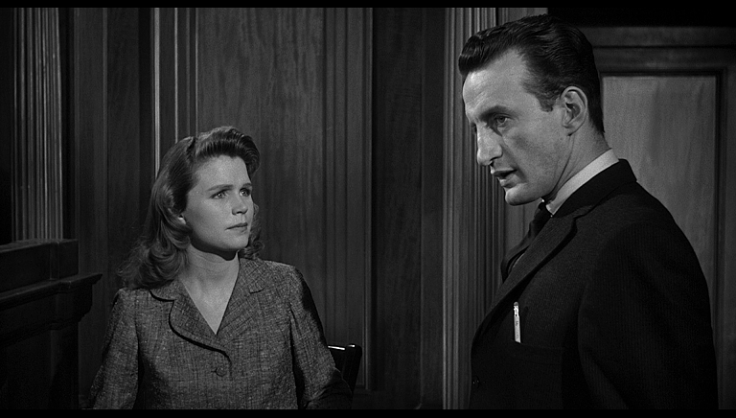
And this is yet another noirish element—the dismantling of witnesses. It seems nearly everyone who takes the stand is just one or two pointed questions away from revealing they’re lying or have been extensively coached to only reveal the parts of the truth that help the prosecution, so watching them tiptoe around the truth is a kind of subversion lurking beneath the entire case.
Finally, we have the defendant himself, a man who despite his situation is still smug, arrogant and even combative. When a surprise witness is called against him near the end of the trial, you really have to wonder if he actually said the things being hurled up against him to damage his case. And if he did, well then you can throw the entire case of The People vs. Anatomy of a Murder right out the window, because there could no longer be any doubt the picture belongs in the realm of film noir—was born for it, even.
Ladies and gentlemen of the jury, as always, the final decision must come down to you. What do you believe is dark cinema? Does it have to be onscreen, or can it come between the lines? Can it be implied? We believe it can. We believe the idea of the thing, and the thing itself, fundamentally inseparable.
The prosecution rests.
5- stars
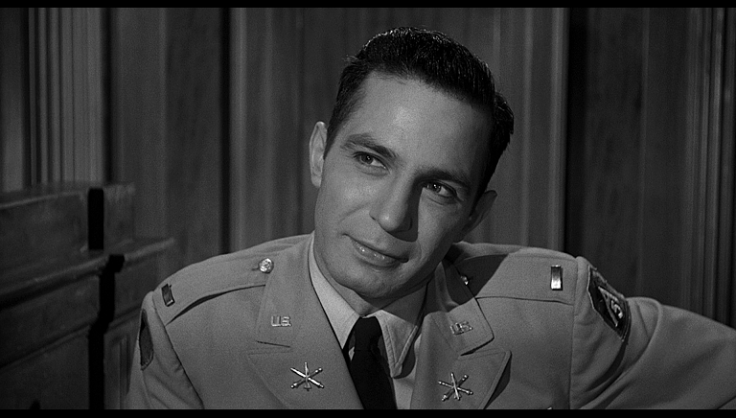


Always happy to hear from book lovers. Please feel free to comment!